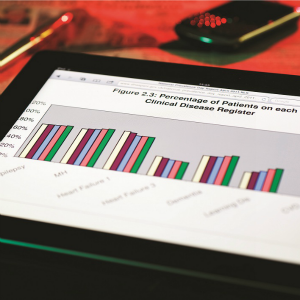The GPC has said it will oppose the inclusion of an all-in-one QOF diabetes indicator which will require GPs to complete eight process checks every year in order to achieve any points after NICE rubber-stamped the suggestion in its final menu of proposed indicators for the 2015/16 contract.
The indicator was approved by NICE QOF advisors last month, despite concerns raised by GPs involved in the pilots that it could be ‘demotivating’ for practices.
The GPC has said it is going to oppose attempts to include the new indicator when negotiating the contract for 2015/16.
As part of NICE’s recommendation, GPs would have to complete all elements included in the wording of the new indicator, NM74, in order to achieve payments.
They include: ‘The percentage of patients with diabetes who have had the following care processes performed in the preceding 12 months: BMI measurement, BP measurement, HbA1c measurement, cholesterol measurement, record of smoking status, foot examination, albumin: creatinine ratio; serum creatinine measurement.’
The QOF advisory board has added a proviso that an indicator based on a smaller set of processes could be considered ‘where appropriate’.
In a footnote to the new indicator it says: ‘The committee recommended that different variations of the diabetes composite could be considered where incentivisation of a smaller sub-set of care processes may be more appropriate.’
The Committee has also formalised advised that new hypertension indicators on target organ damage could be ‘constructed as a composite measure where appropriate’.
Related stories
In full: QOF indicators for 2015/16
GPC: combined diabetes QOF indicator ‘will create cliff edge’
Dr Andrew Green, chair of the GPC clinical and prescribing subcommittee said it was ‘distressing’ the NICE committee had ignored GPs’ views on the bundling of indicators.
Dr Green said: ‘The GPC had already provided NICE with the reasons why bundling the diabetes indicators is not a good idea, and it is distressing to find that once again NICE has ignored the views of GPs with respect to conditions treated in primary care.
‘Complex chronic disease management is as much an art as a science, and NICE seem to be so intent on making sure each dab of paint is perfect they have forgotten to stand back to make sure the picture makes sense, that it doesn’t detract from its neighbours, or even that the gallery is not burning down.’
Dr Green added that while the introduction of hypertension end-organ damage indicators had a ‘sound clinical’ basis, the GPC ‘would not support any bundling for the reasons set out in our consultation response’.
He said: ‘There is a sound clinical basis for the amendments to the existing QOF indicators and for the assessment of end-organ damage for hypertension, and their possible incorporation into QOF will be part of the normal negotiation process.’
Other key new indicators include an update to AF005 to update the risk algorithm used to check patients’ stroke risk from the CHADS2 to the CHA2DS2-VASc score, in line with updated NICE guidance on management of atrial fibrillation.
The AF004 indicator on antiplatelet use is to be retired altogether, again in line with the updated atrial fibrilllation guidance which stipulates aspirin should no longer be used primarily for stroke prevention.
Other key new indicators include revisions to AF002 and AF005 to update the risk algorithm used to check patients’ stroke risk from the CHADS2 to the CHA2DS2-VASc score, in line with updated NICE guidance on management of atrial fibrillation.
The AF004 indicator including antiplatelet use is to be retired altogether, again in line with the updated atrial fibrillation guidance, which stipulates aspirin should no longer be used primarily for stroke prevention.

Click here to find out more about our campaign
Pulse October survey
Take our July 2025 survey to potentially win £1.000 worth of tokens

Visit Pulse Reference for details on 140 symptoms, including easily searchable symptoms and categories, offering you a free platform to check symptoms and receive potential diagnoses during consultations.












